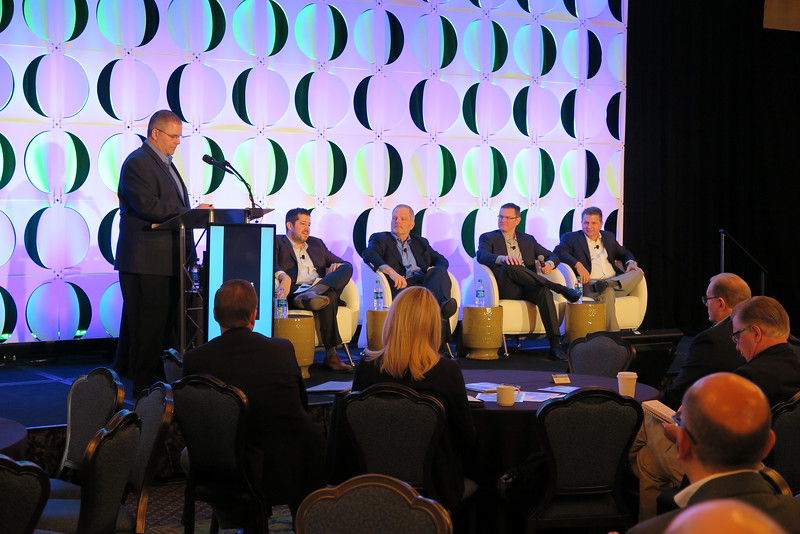Attendees at the “Sixth Inning Strategies” session at the Pro Sales 100 Conference received firsthand feedback from some of the most active and successful acquirers in the industry. The panelists shared their views on the ”inning” of the recovery in which we find ourselves and how much growth still lies ahead.
The panelists at this M&A themed session included LT Gibson of US LBM, Matt Ogden of Building Industry Partners, John Sieggreen of Central Network Retail Group (CNRG), and Steve Swinney of Kodiak Building Partners. All are experienced acquirers of companies that have built their organizations through a series of acquisitions. The panelists generally agreed that we are roughly in the sixth inning of the recovery. Sieggreen pointed out that real estate and housing tend to move in 15-18 year cycles and that we appear to be entering a more pro-business period, with small businesses standing to benefit from various regulatory changes that have been proposed. All of these factors make him optimistic about the continuing recovery.
Ogden took a quantitative approach to determining the current inning by analyzing typical past recoveries. In doing so, he pointed out that single-family starts are at 68% of historical averages, while multi-family starts are at 92% of historical averages. This equates to a single-family game that is in the top of the seventh inning, with no outs, while the multi-family game would be in the top of the eighth inning, with two outs. That would put the overall recovery at the top of the eighth, with no outs.
Statistics shared at the outset of the panel showed that more than half of buyers and sellers in 2016 were specialty distributors focused on a narrow range of products, rather than a broad array of products. Gibson pointed out that, while many view US LBM as a broad lines distributor, the company’s managers view their business as a collection of specialty businesses. Even lumber is viewed as a specialty business, to which US LBM works to bring unique core competencies, as it does in other areas that are more commonly viewed as specialties.
Ogden pointed out that freeing up working capital prior to an acquisition provides selling owners with the opportunity to pull out excess capital tied up in the company prior to a sale. By paring down excess inventory levels and paying vendors at a slower pace (but still within terms), businesses can quickly generate cash. Such excess cash is withdrawn in a sale and represents value in addition to the fundamental value of the business and the real estate. On the topic of real estate, panelists were in agreement that they generally prefer to lease an acquired company’s location, either from the selling owners or in a real estate sale-leaseback.
Immigration is a hot topic in the Trump administration, an emphasis that is finding its way into the deal world. The consensus among panelists was that utilizing the e-Verify system was the best way to ensure that all workers at an acquired company are properly documented. In an acquisition, employees are typically rehired at closing by a newly-created entity. By implementing e-Verify checks during that process, buyers can ensure that no undocumented workers are hired by the acquiring company.
On the topic of interest rate hikes, our panelists agreed that higher interest rates were imminent. However, none were concerned about the impact such hikes would have on the industry. Since we are still at historically low rates, the fact that our economy can bear a rate increase was seen by the group as a positive factor outweighing potentially lower demand for mortgages.
When asked about valuation multiples, most panelists kept their answers conceptual, due to the difficulty of answering that question without a specific company to consider at hand. There was agreement among panelists that EBITDA multiples tend to drift downward as we move to the later stages of a recovery. Gibson said that US LBM focuses on management teams and how his company would work with an individual selling company. During a later discussion regarding the impact of the stage of the recovery on acquisition appetite, Gibson added that “there’s always a buyer if you’ve got a great business.”
So, how was the question of which inning we’re in finally resolved? Steve Swinney of Kodiak put forward the notion that the current recovery, like the 2016 World Series, will likely go into extra innings. The panelists generally agreed on this point, adding that some geographic areas are still in the early innings of their own local recovery. Whether LBM distributors choose to grow through acquisitions or through greenfield operations, there is reason to believe that the next several years will provide a backdrop of continued growth in our segment.



